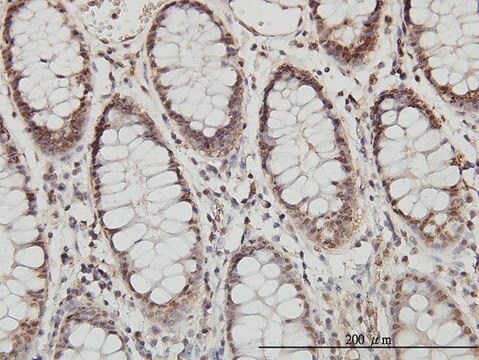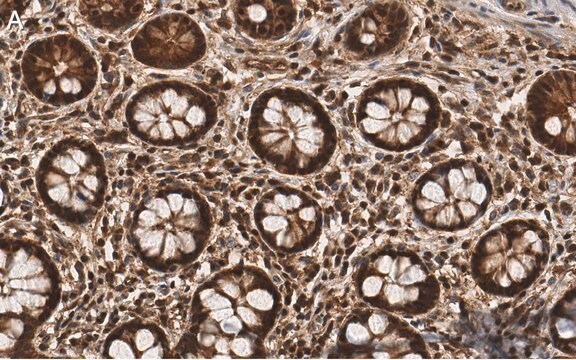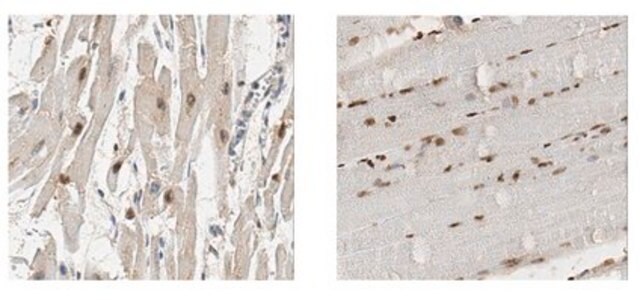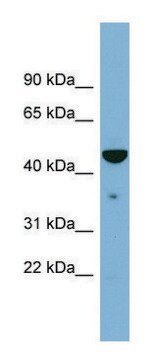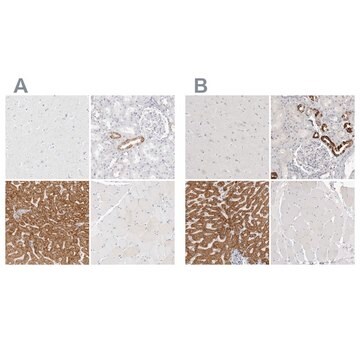WH0005692M1
Monoclonal Anti-PSMB4 antibody produced in mouse
clone 6G7-E8, purified immunoglobulin, buffered aqueous solution
Synonim(y):
Anti-HN3, Anti-HsN3, Anti-PROS26, Anti-proteasome (prosome, macropain) subunit, beta type, 4
About This Item
IHC (p)
WB
indirect ELISA: suitable
western blot: 1-5 μg/mL
Polecane produkty
pochodzenie biologiczne
mouse
Poziom jakości
białko sprzężone
unconjugated
forma przeciwciała
purified immunoglobulin
rodzaj przeciwciała
primary antibodies
klon
6G7-E8, monoclonal
Formularz
buffered aqueous solution
reaktywność gatunkowa
human
metody
immunohistochemistry (formalin-fixed, paraffin-embedded sections): suitable
indirect ELISA: suitable
western blot: 1-5 μg/mL
izotyp
IgG1κ
numer dostępu GenBank
numer dostępu UniProt
Warunki transportu
dry ice
temp. przechowywania
−20°C
docelowa modyfikacja potranslacyjna
unmodified
informacje o genach
human ... PSMB4(5692)
Opis ogólny
Immunogen
Sequence
MEAFLGSRSGLWAGGPAPGQFYRIPSTPDSFMDPASALYRGPITRTQNPMVTGTSVLGVKFEGGVVIAADMLGSYGSLARFRNISRIMRVNNSTMLGASGDYADFQYLKQVLGQMVIDEELLGDGHSYSPRAIHSWLTRAMYSRRSKMNPLWNTMVIGGYADGESFLGYVDMLGVAYEAPSLATGYGAYLAQPLLREVLEKQPVLSQTEARDLVERCMRVLYYRDARSYNRFQTATVTEKGVEIEGPLSTETNWDIAHMISGFE
Działania biochem./fizjol.
Postać fizyczna
Informacje prawne
Oświadczenie o zrzeczeniu się odpowiedzialności
Nie możesz znaleźć właściwego produktu?
Wypróbuj nasz Narzędzie selektora produktów.
Kod klasy składowania
10 - Combustible liquids
Temperatura zapłonu (°F)
Not applicable
Temperatura zapłonu (°C)
Not applicable
Środki ochrony indywidualnej
Eyeshields, Gloves, multi-purpose combination respirator cartridge (US)
Wybierz jedną z najnowszych wersji:
Certyfikaty analizy (CoA)
Nie widzisz odpowiedniej wersji?
Jeśli potrzebujesz konkretnej wersji, możesz wyszukać konkretny certyfikat według numeru partii lub serii.
Masz już ten produkt?
Dokumenty związane z niedawno zakupionymi produktami zostały zamieszczone w Bibliotece dokumentów.
Nasz zespół naukowców ma doświadczenie we wszystkich obszarach badań, w tym w naukach przyrodniczych, materiałoznawstwie, syntezie chemicznej, chromatografii, analityce i wielu innych dziedzinach.
Skontaktuj się z zespołem ds. pomocy technicznej